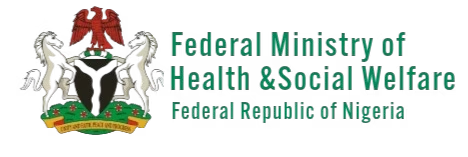Family Health Department
The Department of Family Health was created in July 2008 from the Department of Community Development and Population Activities. It plays a pivotal role in improving the health indices of the country and achieving the health-related Sustainable Development Goals (SDGs). Specifically, the Department contributes to the actualization of Goal 3 of the SDGs by 2030 through the Nigeria MPDSR Platform.
Mission
To develop and coordinate the implementation of policies and programs that promote the health of the family through efficient integrated health services in Nigeria.
Mandate
The Department is responsible for:
- Developing policies and implementation frameworks for maternal, newborn, child, and adolescent health.
- Providing technical assistance to States and Local Governments for Family Health implementation.
- Supplying reproductive health commodities to States and Local Governments.
- Implementing Integrated Supportive Supervision of Family Health programs nationwide.
Core Departmental Functions
The Family Health Department's core functions include:
- Coordinating Nutrition, Reproductive, Maternal, Neonatal, and Child Health programs.
- Promoting Gender, Adolescent Health, School Health, Elderly Care, and Wellbeing.
- Collaborating with Departments within the Federal Ministry of Health, line Ministries, Development Partners, and other stakeholders to empower individuals and communities to make informed decisions about their health.
Divisions in the Department
The Department consists of five divisions:
- Child Health Division
- Gender, Adolescent School Health, and Elderly Care (GASHE) Division
- Health Promotion Division
- Nutrition Division
- Reproductive Health Division
Child Health Division
This division has three branches:
- Child Survival
- Newborn Care
- Maternal Newborn and Child Health Coordination/Programme Management
Functions include:
- Serving as the focal point for issues concerning the health and well-being of Nigerian children.
- Providing policy direction and formulating guidelines on child health.
- Coordinating all programs and activities related to child health.
- Ensuring the implementation of the Integrated Maternal, Newborn, and Child Health (IMNCH) strategy at the State level.
Gender, Adolescent School Health, and Elderly Care (GASHE) Division
This division has three branches:
- Adolescent/School Health
- Care of the Elderly
- Gender and Female Genital Mutilation Control
Functions include:
- Providing leadership for programs in Gender, Adolescent School Health, and Elderly Care.
- Coordinating activities and managing resources for these programs.
Reproductive Health Division
This division has three branches:
- Safe Motherhood
- Family Planning Services and Logistics
- Vesico-Vaginal Fistula Control Programme
Safe Motherhood Branch
Mandate: Improving maternal and newborn health by reducing maternal mortality through skilled attendance at birth, provision of equipment, and midwifery kits.
Functions:
- Developing training manuals and national guidelines on maternal and newborn health.
- Creating information, education, and communication materials.
- Monitoring and supervising safe motherhood programs.
Family Planning Branch
Mandate: Ensuring the availability of contraceptive commodities for quality family planning services.
Functions:
- Training clinical service providers on modern family planning methods.
- Forecasting and procuring family planning commodities.
- Building capacity for implementers on the Contraceptive Logistics Management System (CLMS).
Vesico-Vaginal Fistula Control Branch
Functions:
- Coordinating VVF control activities in existing centers.
- Organizing mass repair of VVF cases across the country.
- Training medical personnel on VVF management.
Health Promotion Division
This division has three branches:
- Health Education
- Service Improvement
- Advocacy/Behaviour Change Communication Materials Development
Functions include:
- Developing healthy public policies and creating supportive environments for health.
- Strengthening community action and re-orienting health service providers.
- Developing behavior change communication materials and conducting public awareness campaigns.
Nutrition Division
This division has three branches:
- Micronutrient Deficiency Control
- Monitoring and Evaluation/Nutrition Information and Surveillance System (M&E NISS)
- Infant and Young Child Feeding
Functions include:
- Providing leadership for nutrition programs and coordinating activities.
- Formulating policies and guidelines for service delivery.
- Conducting advocacy, education, and capacity-building initiatives.
Saving One Million Lives Programme for Results (SOML P for R)
This government program, launched in 2012, focuses on improving the coverage and quality of Maternal and Child Health (MCH) services. Supported by a $500 million credit from the World Bank, it rewards states with fiscal transfers when they achieve improvements in MCH services.
Functions include:
- Providing technical support to State Ministries of Health.
- Collecting and publishing data timely.
- Overseeing the disbursement of funds to states.

